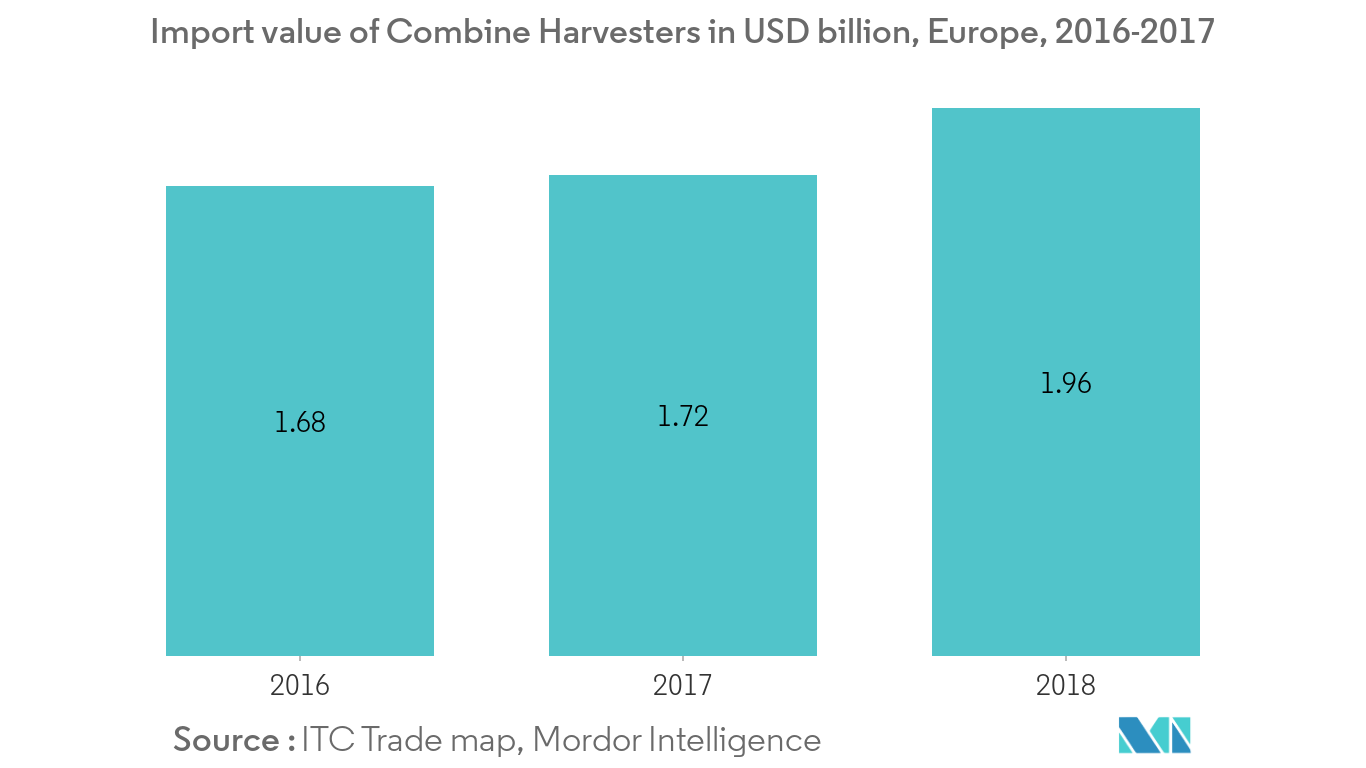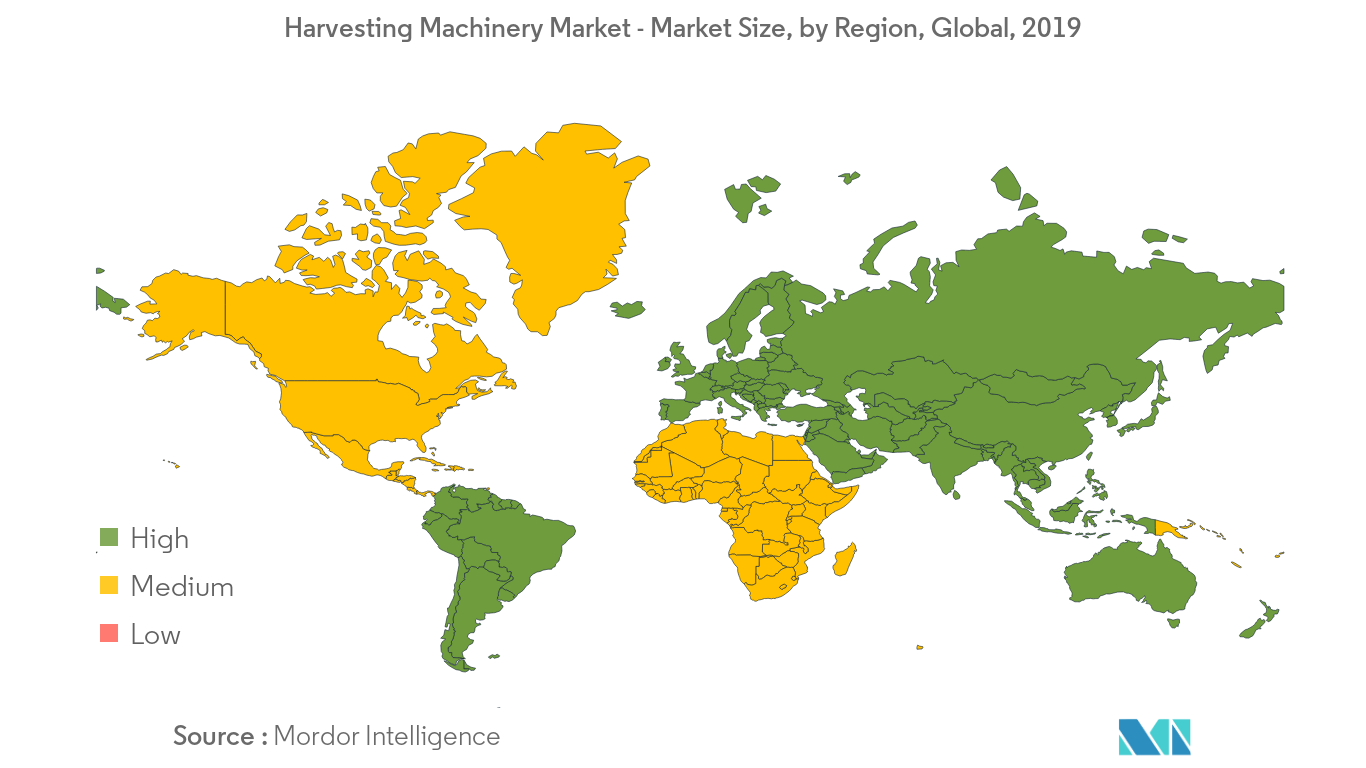Market Trends of Global Agricultural Harvesting Machinery Industry
This section covers the major market trends shaping the Harvesting Machinery Market according to our research experts:
Precision Farming for Quality Harvest
The need for quality harvest with an increased yield and productivity has led to the evolution of several advanced farming technologies in harvesters, such as increased electronic sensing to monitor harvest load, cloud-based processing for yield, and quality maps, among others. According to CEMA, 70%-80% of the new agricultural machinery and harvesters sold have been found to be equipped with precision farming technology. The increasing demand for harvesters equipped with technologically developed tools is further reflected through the total import value of combine harvesters in the region such as Europe, where imports rose from USD 3.41 million in 2016 to USD 4.10 million in 2018. As such, the ongoing trend of precision farming is projected to increase the demand for harvesters duing the forecast period.

Asia Pacific is the Fastest growing market
The acute shortage of labor resources for agricultural activities, owing to the lucrative opportunities in the growing industrial sector, is the major factor driving the growth of agricultural machinery equipment, such as harvesters in the region. In additin to this various governments are providing subsidies to farmers for investing in better equipment to efficiently meet the needs for higher productivity. For instance, Government of India inititated various farm mechanization programs in the country through the schemes, such Rashtriya Krishi Vikas Yojna (RKVY) and Mechanisation, under the National Food Security Mission (NFSM). Through these schemes, the government is encouraging farmers to purchase farm machinery, such as harvesters, by providing a subsidy. Thus, the demand for harvestor machines is projected to increase further with number of international companies launching their harvesting machinery by expanding their business in the region during the forecast period.


